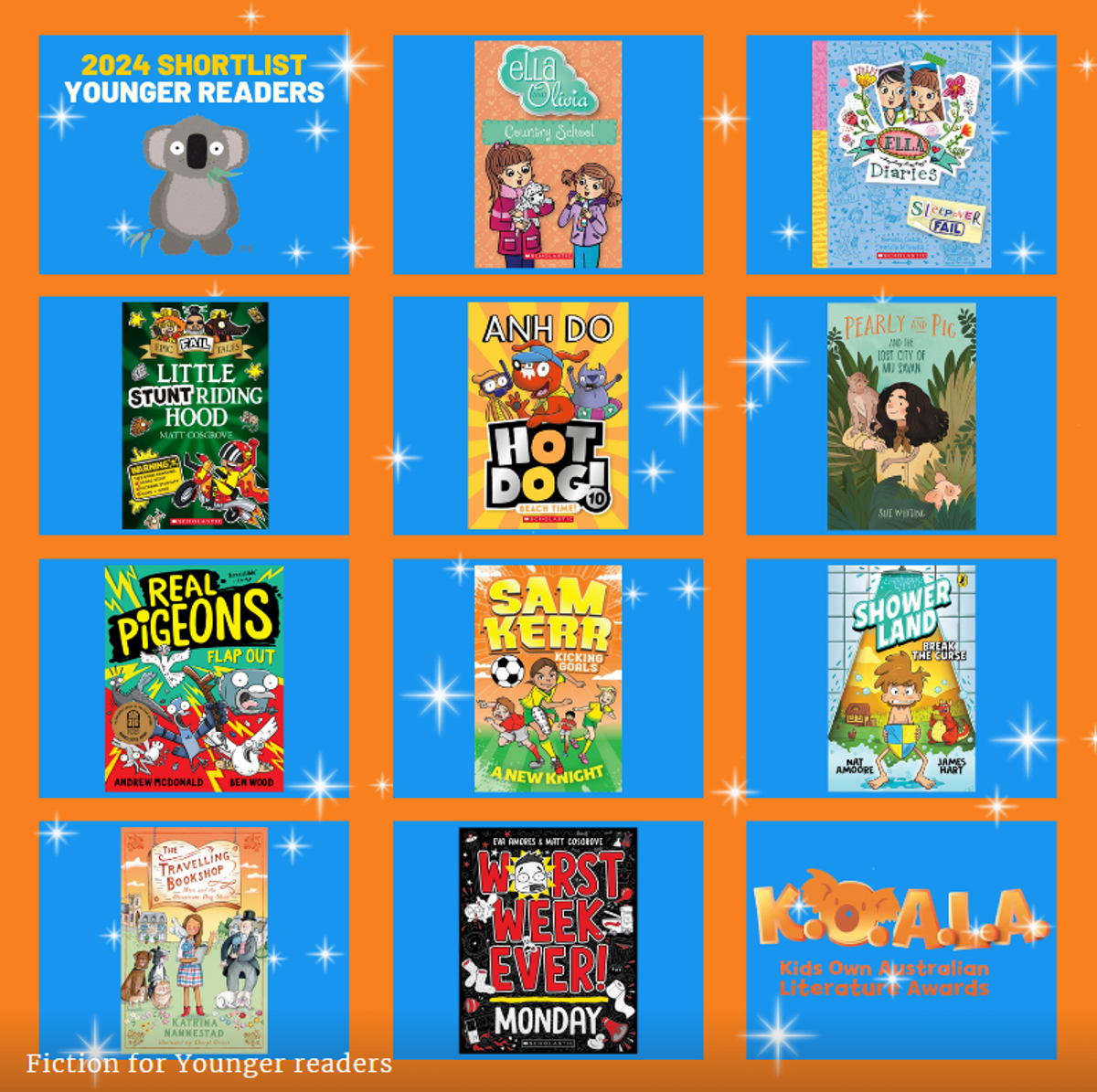Literacy

KOALA Awards
In the past editions of the Literacy page of the newsletter, we have suggested some books that might be good for students to read. One website that is fantastic for finding books is called KOALA. KOALA stands for Kids Own Australian Literature Awards. As the name suggests, KOALA promotes Australian authors and allows students to be the ones nominating and voting on the texts they like. The 2024 list included a number of books that were very popular with some of our students. Below are the shortlisted books for younger readers and older readers.
Understanding the Sentence Fluency Trait in Writing
At Vermont Primary School, one of the essential elements we emphasise in our writing curriculum is the Sentence Fluency trait. This aspect helps students write smoothly and naturally, making their writing more enjoyable to read and easier to understand.
What Is the Sentence Fluency Trait?
The Sentence Fluency trait refers to the rhythm and flow of sentences within a piece of writing. Strong sentence fluency means that sentences vary in length and structure, creating a pleasant rhythm that captures the reader’s attention. It also ensures that sentences link seamlessly, contributing to a cohesive and polished piece of writing.
How We Develop Sentence Fluency in the Classroom
In our classrooms, we use several strategies to help students improve their sentence fluency:
Experimenting with Sentence Length and Structure: We encourage students to use a variety of sentence types—short and punchy or long and detailed. This variation helps to create rhythm and emphasis in their writing.
Reading Aloud for Flow: We teach students to read their writing aloud, helping them hear how sentences sound when strung together. This practice allows them to identify parts that may need smoothing out or adjusting for a more natural flow.
Combining and Expanding Sentences: Through activities like sentence combining, students learn how to add details and improve fluency without sacrificing clarity. They practice connecting ideas seamlessly, leading to writing that is engaging and easy to follow.
Using Transition Words: Transition words and phrases help link ideas and give writing a logical flow. We encourage students to use transitions thoughtfully to guide readers through their ideas.
Modeling Fluent Writing: Teachers model fluent writing by sharing examples of text that flows smoothly. We use mentor texts to show how authors vary sentence types and create a rhythm that enhances their message.
How Parents Can Support Sentence Fluency Development at Home
Parents can play a valuable role in helping their child develop strong sentence fluency. Here are some ways to support this growth:
Read Aloud Together: When reading books aloud, point out sentences that flow well or have an enjoyable rhythm. Discuss how sentence variety can make writing more interesting.
Encourage Storytelling: Invite your child to tell a story or describe their day using a mix of sentence lengths. This helps them naturally practice structuring ideas in a way that flows.
Play with Sentences: Challenge your child to create sentences that are long, detailed, or short and punchy. Experimenting in this way helps them understand the impact sentence length and structure can have on writing.
Review Writing for Flow: When reviewing your child’s writing, encourage them to read it aloud. Ask questions about how the sentences connect and whether they flow naturally. This can help them identify areas for improvement.
Celebrate Fluent Sentences: Praise your child when they use varied sentence structures that enhance their writing’s rhythm and flow. Highlight how this improves readability and makes their work more engaging.
Fortnightly Segments
Writing Challenge
If your child enjoys their writing and is keen to write for enjoyment at home, below is a prompt that you could ask your child to write about.
Write a story about a lost city.
Optional Comprehension Activities
Write a letter to the main character and the character's reply.



